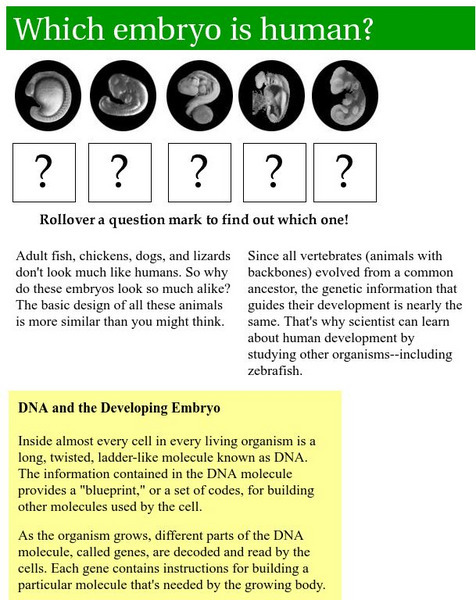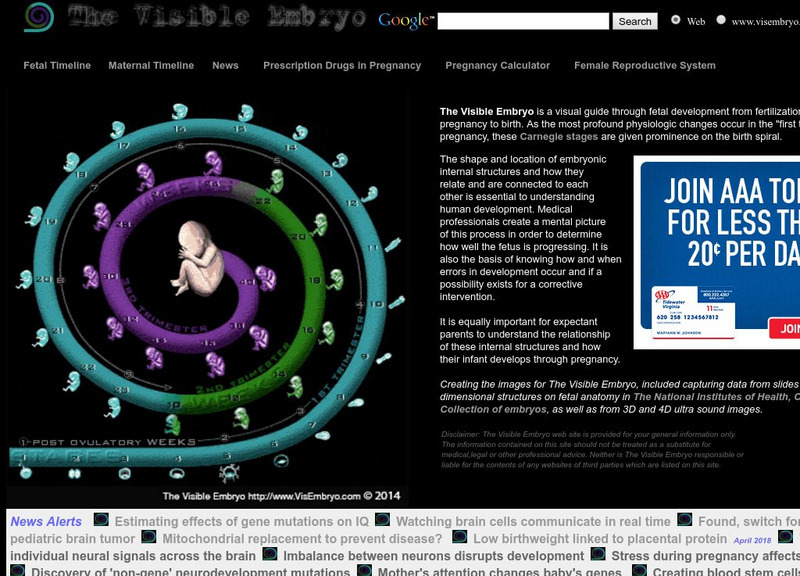Exploratorium
Exploratorium: Which Embryo Is Human?
Scientists can use the research they gather from studying embryos of dogs, lizards, fish, and chickens to better understand human embryos. How is this possible? You'll find out with this Exploratorium resource.
eSchool Today
E School Today: Your Cool Facts and Tips on Sexual Reproduction
The basics of how humans reproduce is covered here. Learn about female and male reproductive organs, mating, fertilization, how a fetus develops, and birth.
Texas Instruments
Texas Instruments: Amazing Fetal Growth
In this activity you will: graph data of human fetal growth and describe the rate of human fetal growth.
CK-12 Foundation
Ck 12: Life Science: 11.72 Pregnancy
Understand fetal growth during pregnancy in humans.
What2Learn
What2 Learn: Human Gestation
This two-task student activity asks the learner to revise notes on gestation, and then play an interactive game to reinforce skills.
Johns Hopkins University
New Horizons for Learning: Embryological Development
In this article, "Dr. Scheibel tells the fascinating story of how the brain develops in human beings from conception to birth. He makes clear that this complex, rapidly developing process is affected continually by the environment in...
Other
The Visible Embryo
Discover the development of an embryo. Beginning with fertilization and progressing through each stage in the first trimester and continuing every two weeks for the second and third trimesters. This site is meant for medical students and...
Texas Instruments
Texas Instruments: Growing Babies
In this activity, students observe and graph data about human fetal growth rates. Students build a regression model based on the data and compare values with those of other mammals. They also compare the data to non-mammal species.
National Cancer Institute at the National Institutes of Health
Seer Training Modules: Introduction to the Reproductive System
Self-guided learning activity where students learn about the structure and function of the male and female reproductive systems. There is a short quiz at the end of the lesson to check for understanding.
Other
Nichd: Spina Bifida
This site from the National Institute of Child Health and Human Development provides in-depth information about the birth defect, Spina Bifida.





